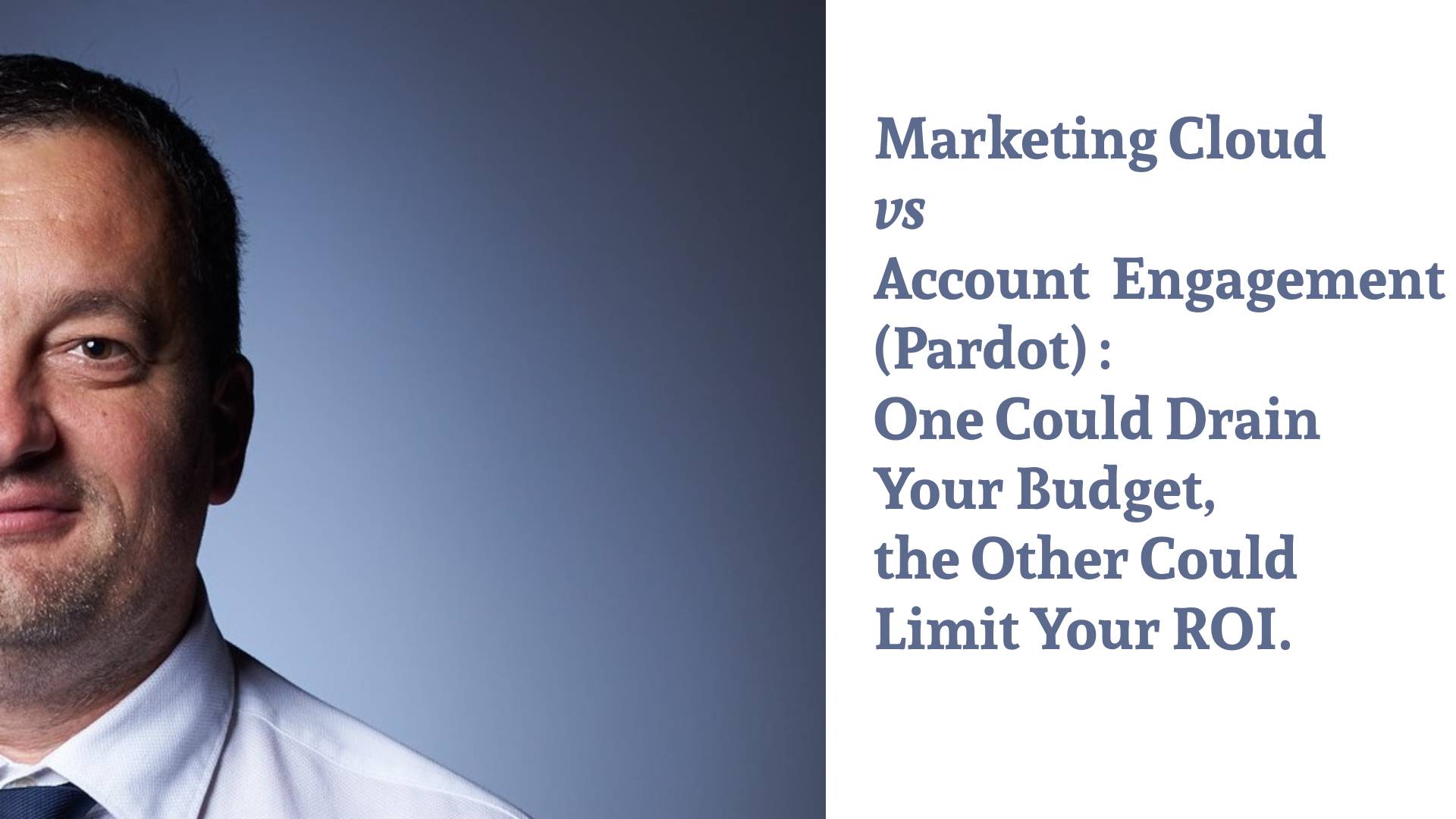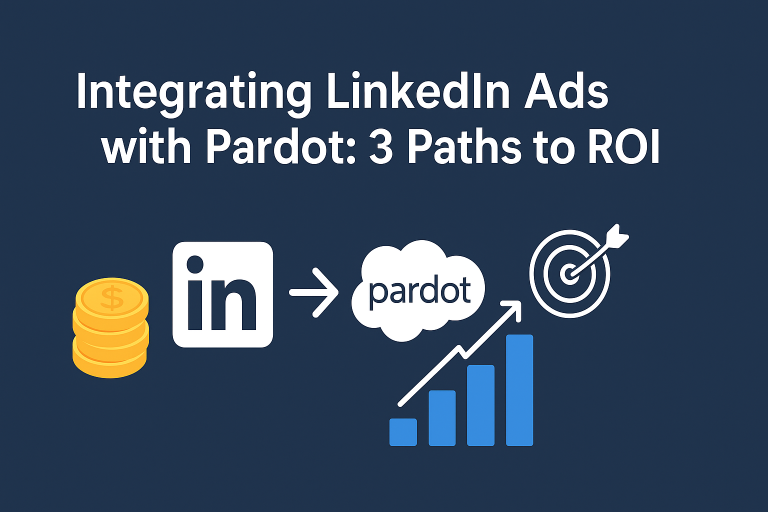Account Engagement (Pardot) vs. Marketing Cloud Growth – Cost Efficiency and ROI Comparison
Comparing Salesforce Account Engagement (Pardot) and Marketing Cloud Growth Edition in terms of cost-efficiency over short and long term reveals key trade-offs depending on your marketing goals, technical needs, and scaling plans.
Here’s a structured breakdown:
⚖️ 1. Initial Setup & Short-Term Cost
| Platform | Advantages | Disadvantages |
|---|---|---|
| Account Engagement (Pardot) | ✅ Lower base price (starts around ~$1,250/month) ✅ Fast to deploy (prebuilt B2B marketing automation) ✅ Simple lead nurturing | ❌ Limited flexibility ❌ Restricted in multichannel (mostly email, landing pages) ❌ Pay per number of contacts (can become costly if database is large but cold) |
| Marketing Cloud Growth | ✅ Includes Journeys, Email, Mobile, Forms, CDP Lite ✅ Modern UI, scalable architecture ✅ More automation power out of the box | ❌ Higher initial cost (~$4,000/month or more) ❌ Requires more setup effort (Data Extensions, Journeys) ❌ Steeper learning curve |
🔎 Short-Term Takeaway:
- Pardot is more cost-effective if you’re starting small, focused on email + lead scoring for B2B.
- MC Growth offers more flexibility and channels, but the ROI comes after ramp-up.
📈 2. Long-Term Scalability & ROI
| Platform | Advantages | Disadvantages |
|---|---|---|
| Account Engagement | ✅ Great for small to medium B2B sales cycles ✅ Easy sales-marketing alignment via Lead/Contact sync | ❌ Harder to scale for multichannel (SMS, WhatsApp) ❌ Limited segmentation and personalization ❌ Not ideal for ecommerce, retail, or dynamic content-heavy use cases |
| MC Growth | ✅ Grows with you: from simple journeys to full cross-channel orchestration ✅ Real-time data integration (via Data Cloud Lite) ✅ Stronger long-term personalization, AI, real-time data use | ❌ Higher long-term cost if unused features aren’t adopted ❌ Requires proper team/process maturity to see value |
🔎 Long-Term Takeaway:
- Pardot may hit a ceiling in functionality if your needs grow toward omnichannel or real-time personalization.
- MC Growth offers deeper personalization and cross-channel engagement that better justifies its cost over time.
💰 Cost Sensitivity & ROI Factors
| Factor | Account Engagement | Marketing Cloud Growth |
|---|---|---|
| Cost model | Based on contact count (tiered) | Based on messages + contacts + features |
| Licensing complexity | Simple | Medium-high |
| ROI timeline | Shorter (3–6 months) | Longer (6–12+ months) |
| Staff skill needed | Medium | High |
| Tech stack fit | Best for B2B lead gen | Best for B2C + complex B2B multichannel |
✅ Recommendations by Scenario
| Business Type | Best Fit |
|---|---|
| SMB B2B, short sales cycles | Account Engagement |
| Mid-market B2B with longer nurturing + scoring | Account Engagement (Plus or Advanced) |
| B2C or hybrid businesses | MC Growth Edition |
| Marketing teams with cross-channel goals (email + SMS + push + ads) | MC Growth |
| You need dynamic content, multi-language campaigns, or Data Cloud | MC Growth |
| You’re focused just on email and scoring leads | Account Engagement |
🧠 Strategic Consideration:
- Pardot (Account Engagement) is like renting a powerful compact car: quick, efficient, affordable — but not built for heavy hauling.
- Marketing Cloud Growth is like leasing a high-end SUV: bigger, more versatile, longer ROI horizon — but requires fuel (budget, time, people) to run effectively.
🧾 Conclusion
When it comes to choosing between Salesforce Account Engagement and Marketing Cloud Growth Edition, there’s no one-size-fits-all answer — it all depends on your marketing maturity, business goals, and budget timeline.
If you’re focused on short-term ROI, have a lean team, and need a reliable B2B lead nurturing tool, Account Engagement offers a cost-effective and focused solution. On the other hand, if your vision includes multichannel campaigns, real-time data personalization, and long-term scalability, Marketing Cloud Growth becomes a powerful investment with broader possibilities.
✅ Start small with purpose — but plan with growth in mind.
💡 The most expensive tool is the one that sits unused. Choose the platform your team can grow into, not just the one that fits today.







